This Moong Methi thepla is a high-protein upgrade of the classic ones. It is made with a combination of green moong beans, homemade multigrain flour, fresh fenugreek leaves (methi), and a variety of Indian spices. It is a healthy and nutritious breakfast, lunch, or snack option that can be served with yogurt, chutney, achaar, or subzi.
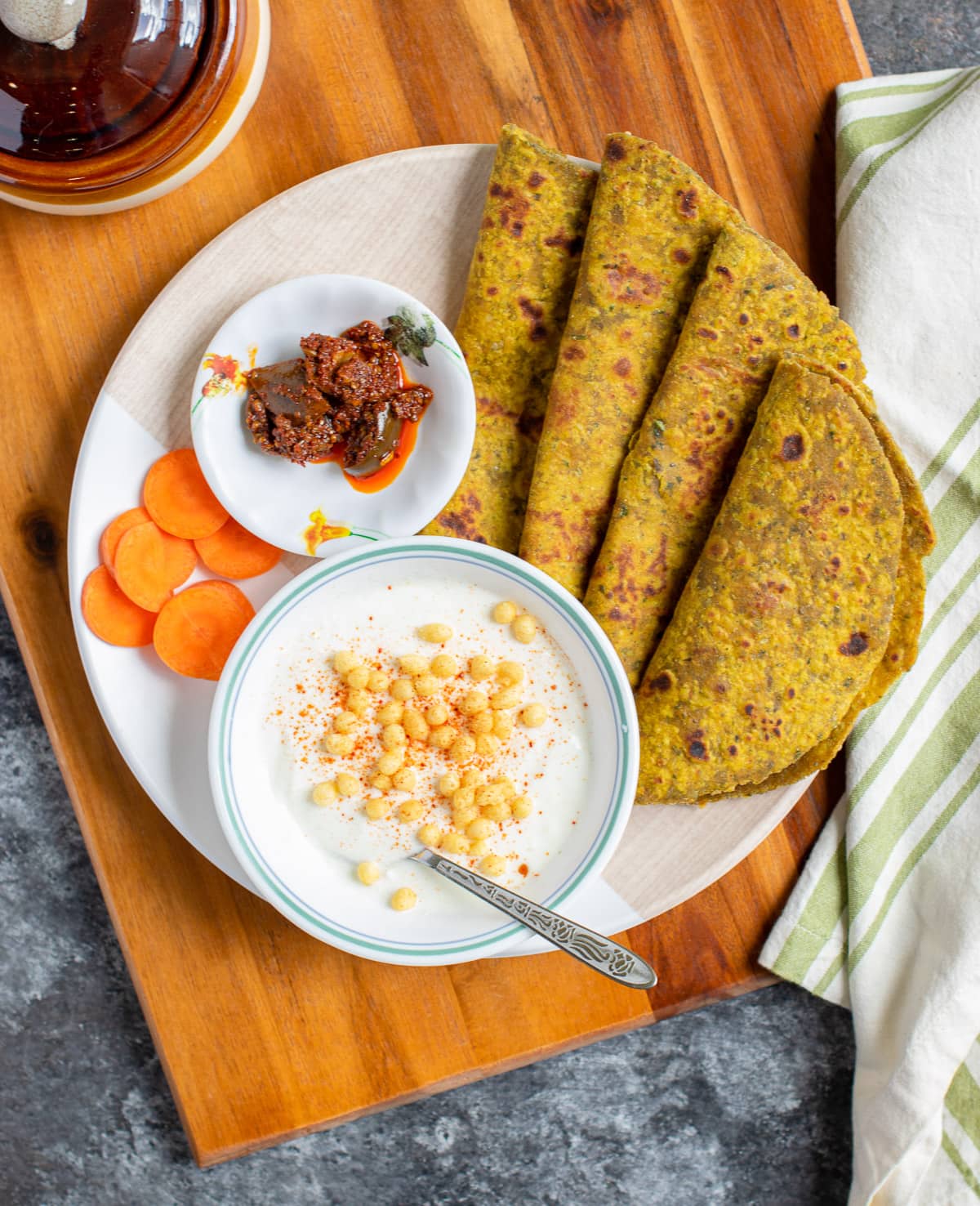
Why should you make this recipe?
We all agree that theplas are a convenient option when it comes to getting meals quicker on the table. The main reason behind it is that you can make them ahead of time, and refrigerate or freeze them when needed.
You know kids are hungry all the time. As a mom, I have to come up with thoughtful snacks for them without spending a lot of time every day in the kitchen. These moong methi theplas make a better alternative to bread for a snack.
I make green moong dal once a week and always have some leftovers. The next day I turn them into theplas like these by adding flour, spices, and fresh or frozen methi leaves. Sometimes I add in grated zucchini or lauki as well. These theplas are a nutritious alternative to basic rotis and parathas.
Jump to:
Ingredients
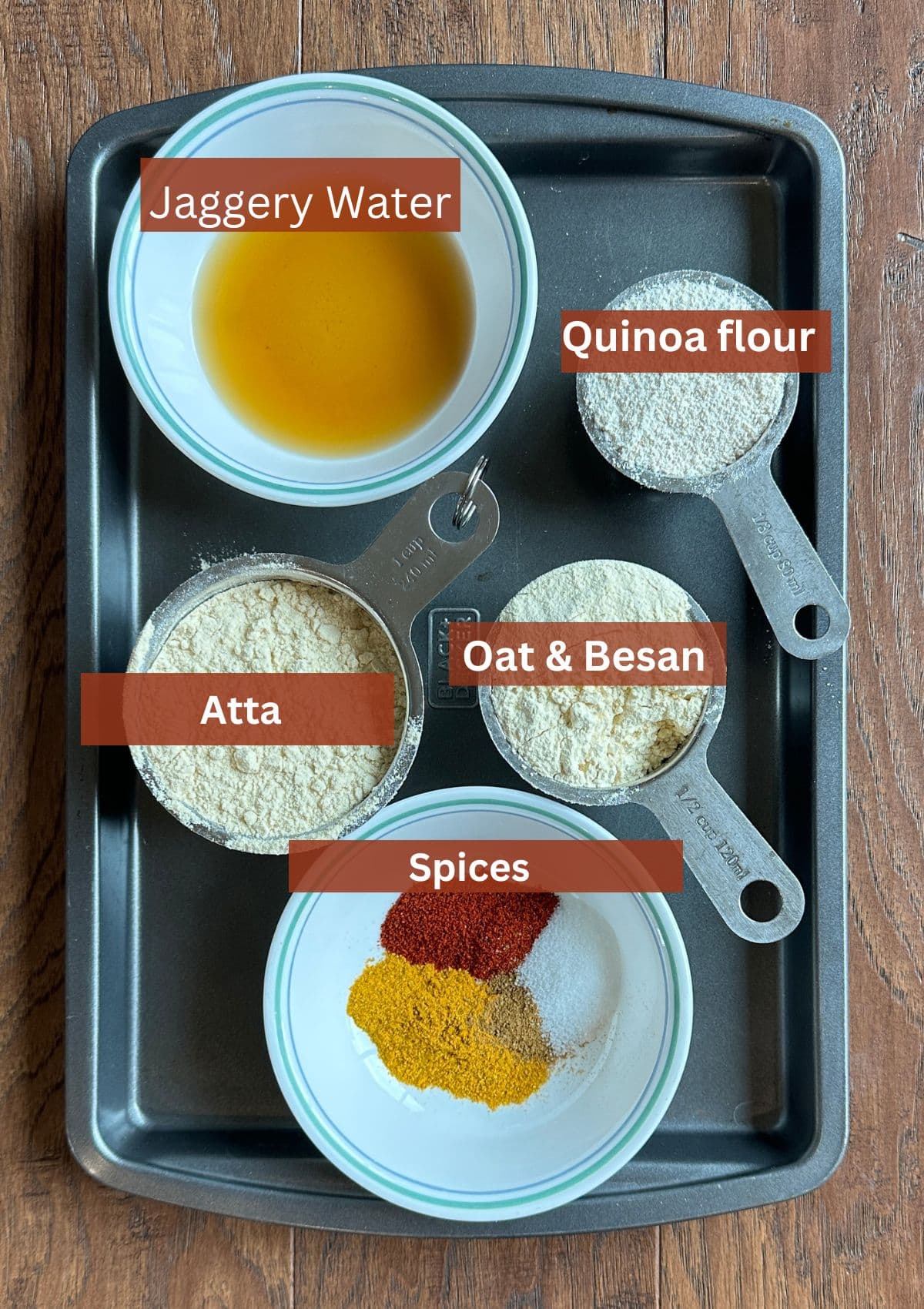
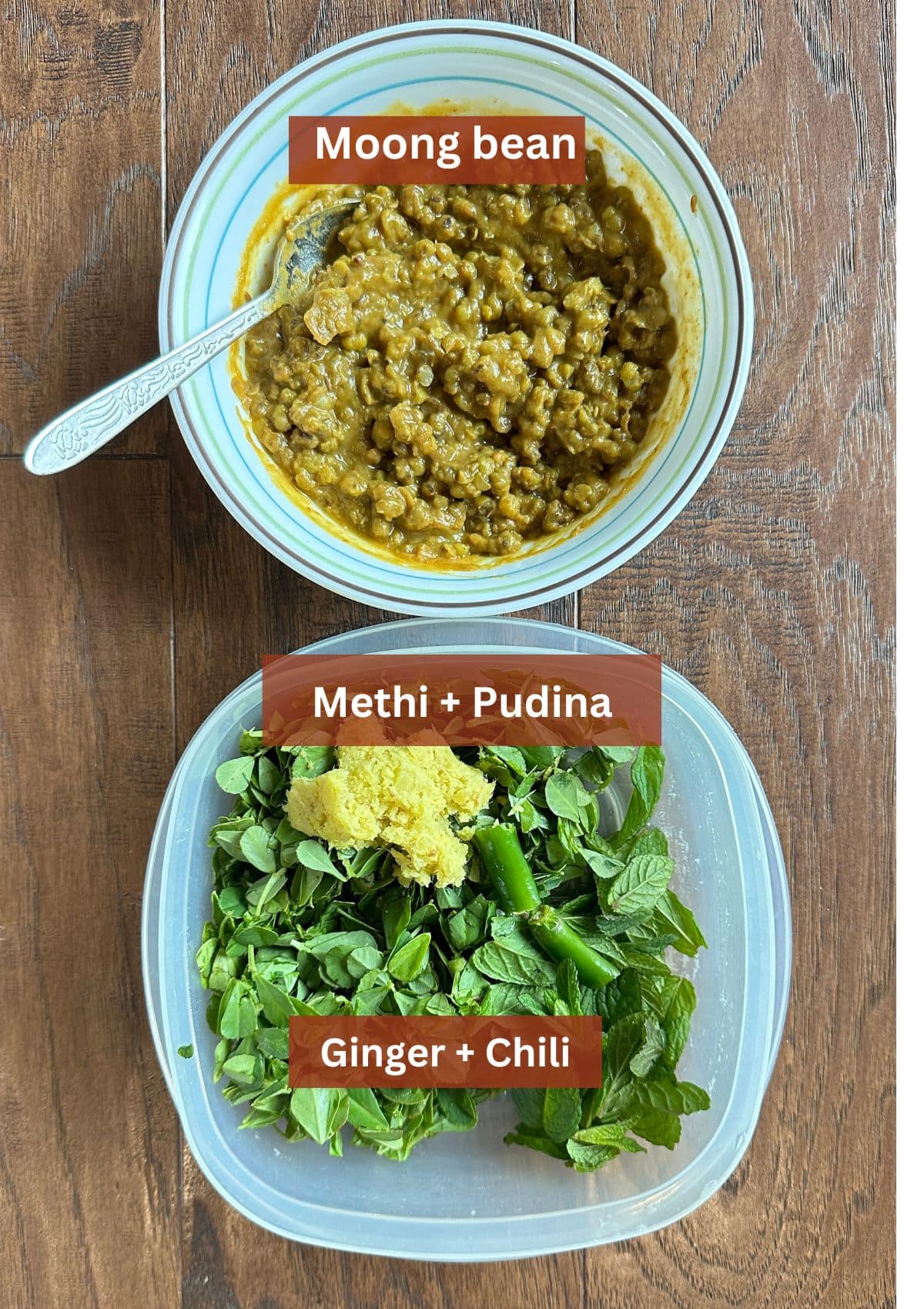
Multi-grain flour.
Solely whole-wheat flour is good, but multi-grain flour is so much better and more nutritious. Different types of flour come with a good amount of fiber, protein, iron, and potassium. Therefore it is a good idea to mix them up and get extra nourishment.
How to make multi-grain flour at home?
- Do not get overwhelmed when I said multi-grain flour. I make my own flour by mixing store-bought flour in certain ratios in less than 1 minute. This time I used oat flour, quinoa flour, besan, and whole wheat flour.
- Mix them all up in the mentioned proportions and it is ready to use for this recipe.
- You can mix a big batch of these flours and store them to make phulkas or parathas.
Mung beans.
I have used leftover green moong dal for this recipe. You can use boiled moong as well. If doing so, increase the spices and seasoning.
Why you should add Mung bean to your diet?
- Yes, mung beans are a nutritious food that provides several health benefits. Here are some reasons why mung beans are considered nutritious:
- High in protein: Mung beans are a good source of plant-based protein, providing around 14 grams of protein per cooked cup.
- Rich in fiber: Mung beans are also high in fiber, which can help to promote healthy digestion, lower cholesterol levels, and improve blood sugar control.
- Low in fat and calories: Mung beans are low in fat and calories, making them a great food option for weight management.
- Packed with vitamins and minerals: Mung beans are a good source of several important vitamins and minerals, including folate, iron, magnesium, and potassium.
- May have health benefits: Mung beans contain several bioactive compounds that may have health benefits, such as reducing inflammation, improving heart health, and helping to manage diabetes.
- Overall, mung beans are a nutritious and versatile food that can be used in a variety of dishes, including soups, stews, curries, and salads. They are also easy to cook and can be a great addition to a healthy and balanced diet.
Methi leaves.
You can make these theplas all year long with fresh or frozen methi leaves.
Methi leaves nutrition profile.
- Methi leaves, also known as fenugreek leaves, are a nutritious food that provides several health benefits. Here are some reasons why methi leaves are considered nutritious:
- Rich in vitamins and minerals: Methi leaves are a good source of several important vitamins and minerals, including vitamin C, vitamin K, folate, iron, and potassium.
- High in fiber: Methi leaves are also high in fiber, which can help to promote healthy digestion, lower cholesterol levels, and improve blood sugar control.
- May have health benefits: Methi leaves contain several bioactive compounds that may have health benefits, such as reducing inflammation, improving heart health, and helping to manage diabetes.
- Low in calories: Methi leaves are low in calories and fat, making them a great food option for weight management.
- Versatile: Methi leaves can be used in a variety of dishes, including curries, stews, soups, salads, and flatbreads.
- Overall, methi leaves are a nutritious and versatile food that can be a great addition to a healthy and balanced diet.
Mint leaves.
I use a fistful of fresh herbs like mint for these theplas. It makes it extra tasty.
Ginger and green chilies.
These add a lot of flavor and heat to the thepla dough.
Oil or yogurt.
Adding oil or yogurt makes the theplas soft. You can use either or a combination of both.
Jaggery.
I use jaggery to balance the bitterness from the methi in these theplas.
Basic Indian spices.
Red chili powder, turmeric, coriander powder, and cumin add up to the flavor profile.
White sesame seeds.
Sesame seeds are high in protein and taste great in theplas.
Instructions
Full recipe in the recipe card at the end of the post.
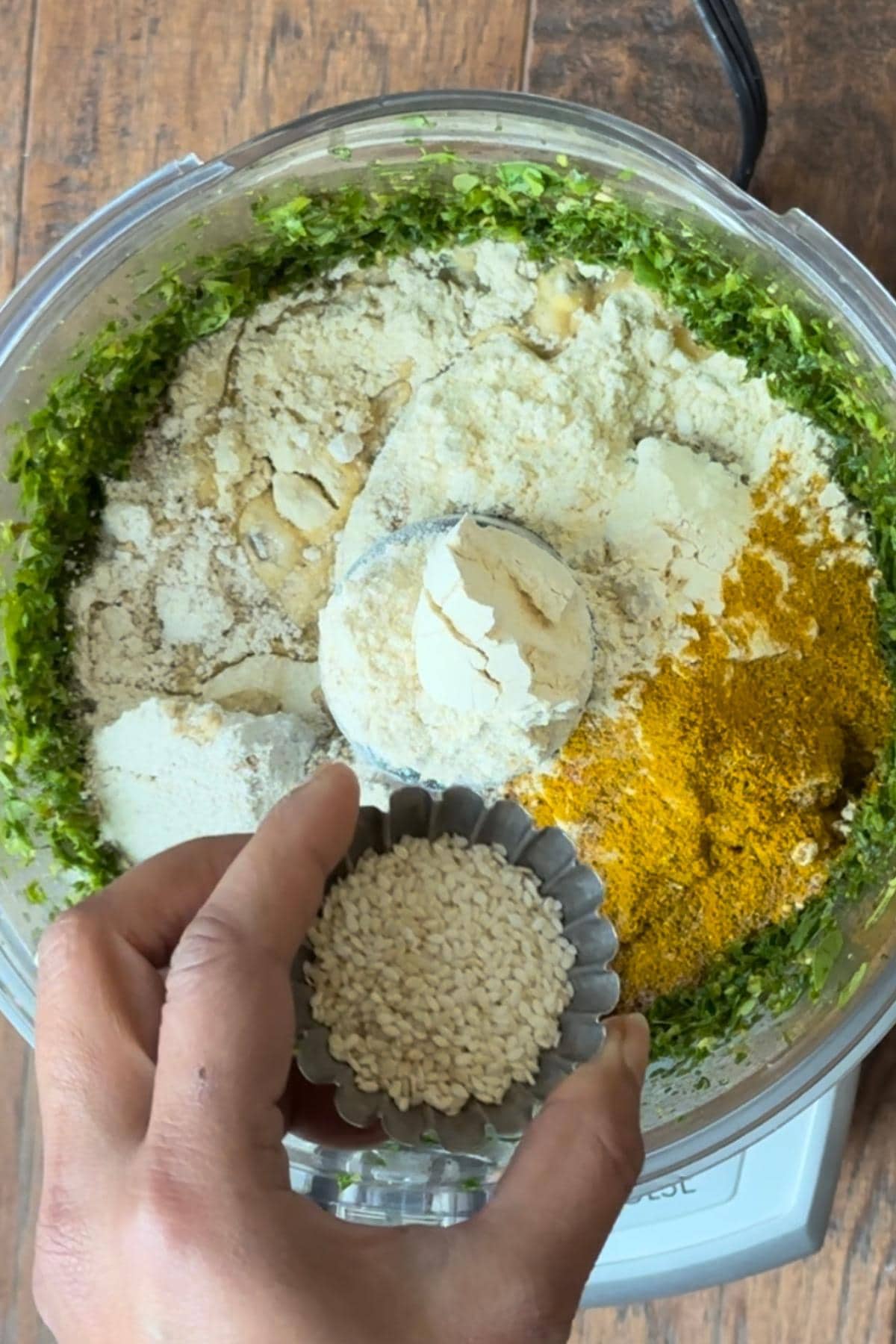
Combine everything called for making theplas to make a soft dough.
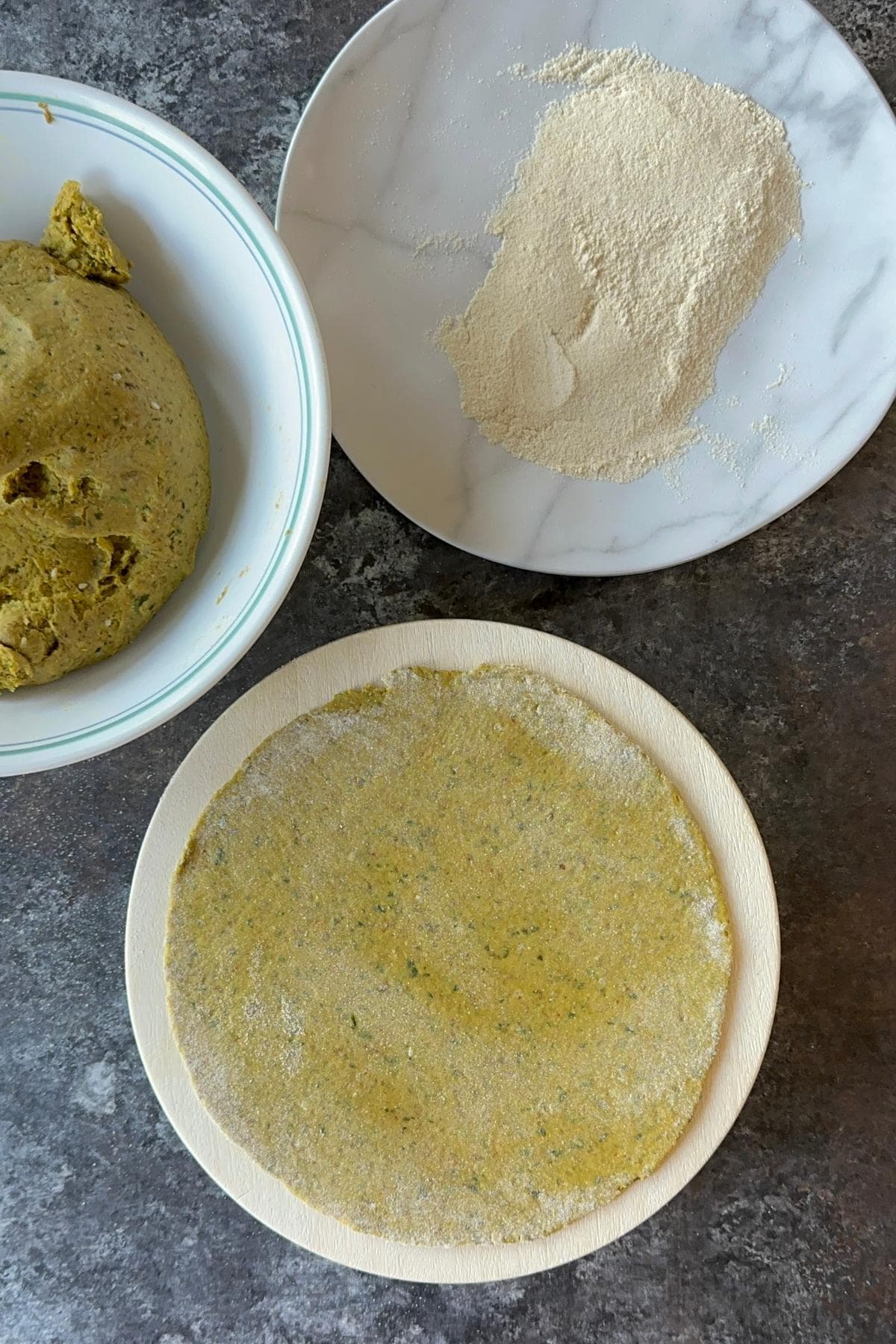
Rest the dough for 30 minutes. Roll them out.
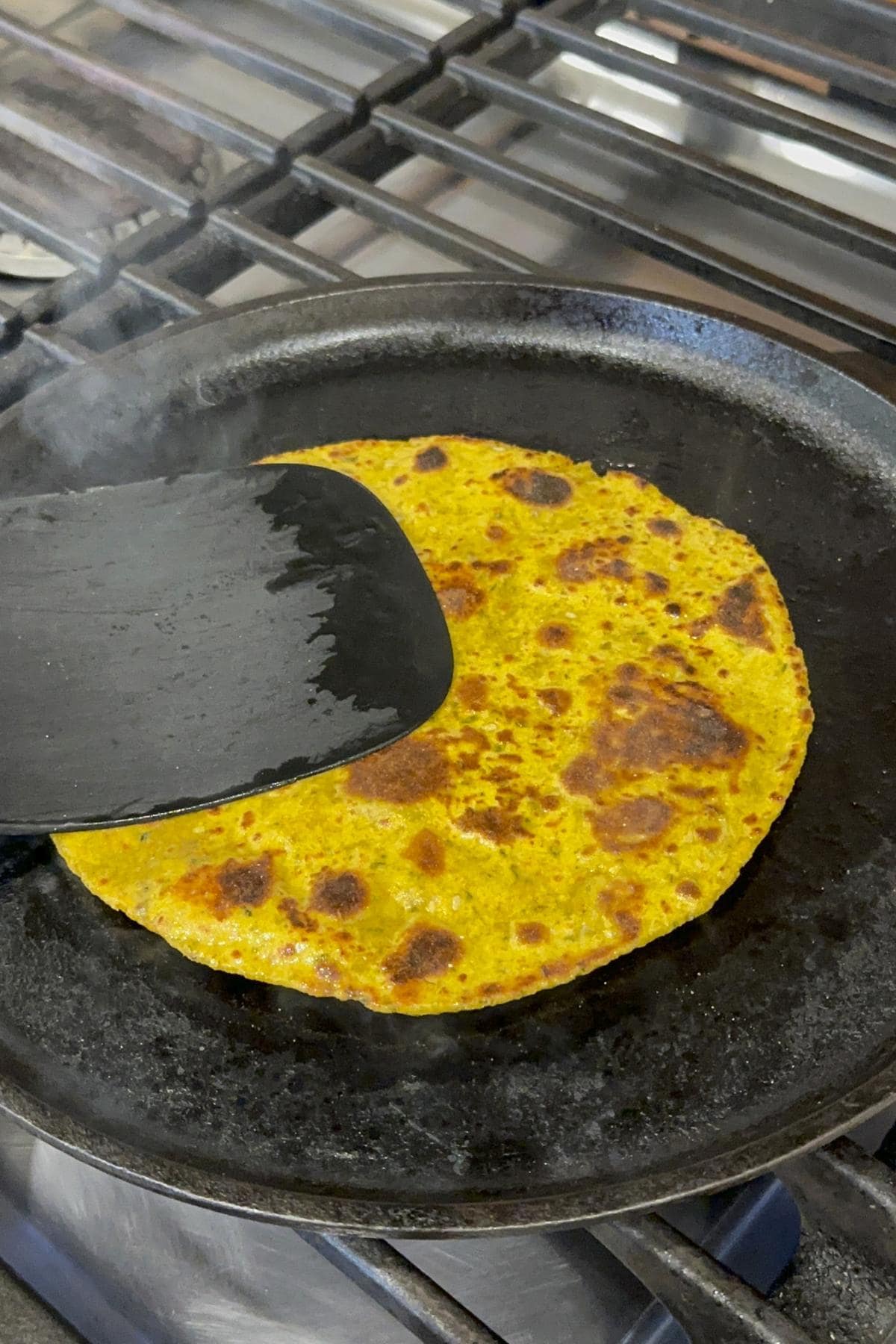
Cook the theplas flipping in between. Cook on medium heat over a skillet, brushing with oil.
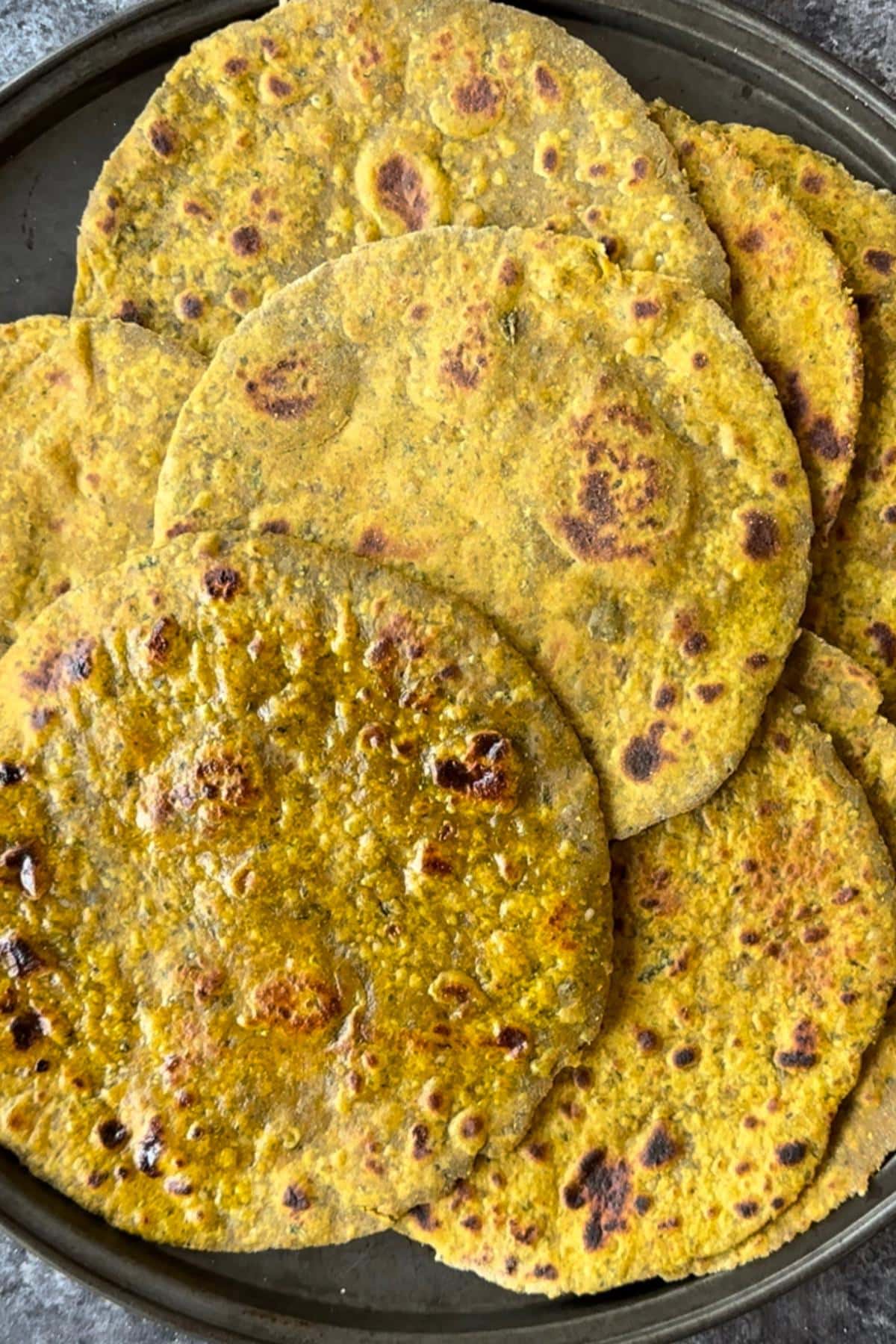
Let them cool completely before storing them in the fridge or freezer.
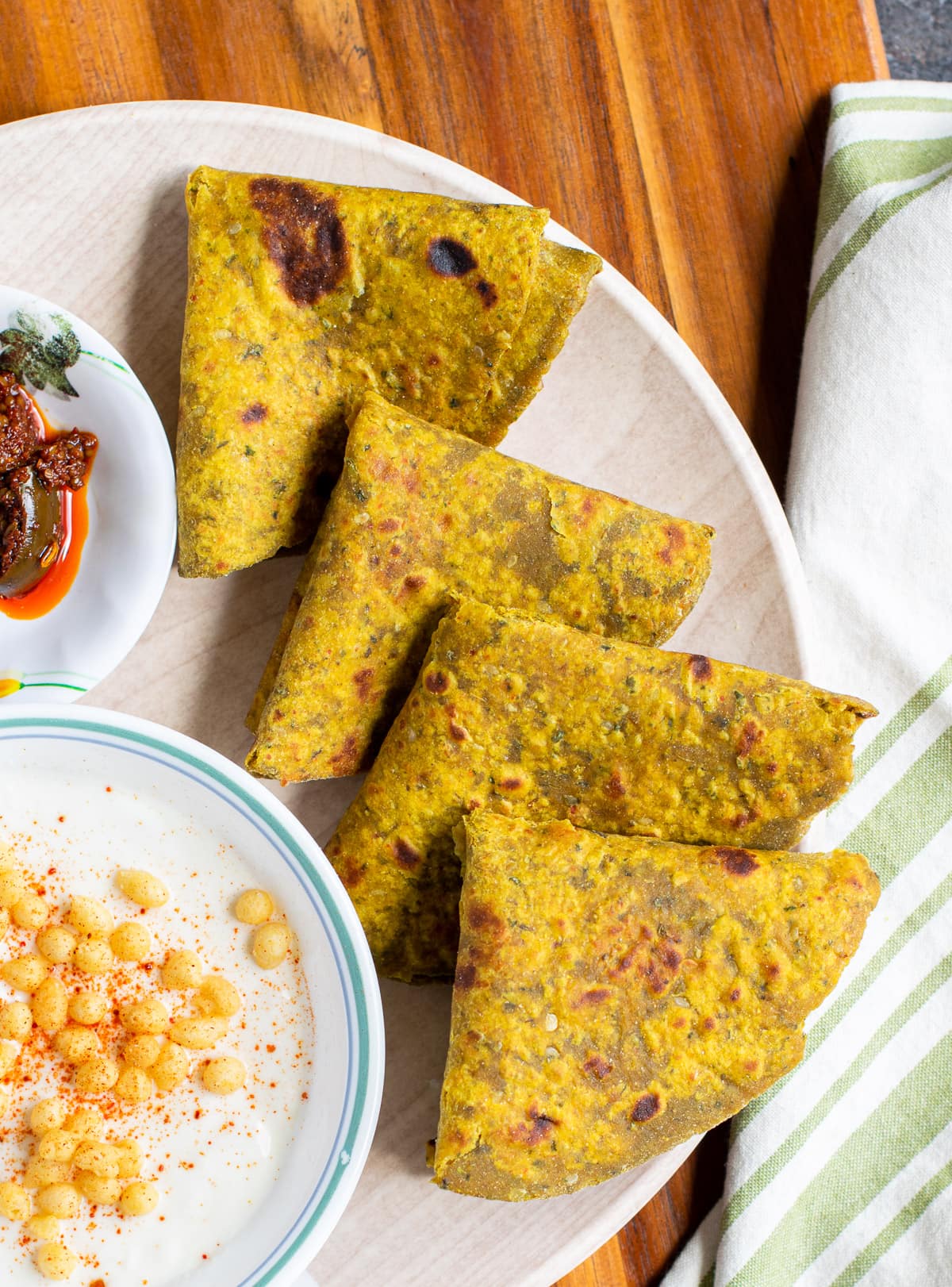
Substitutions.
- Use whole wheat flour and besan instead of multigrain flour.
- Make oat flour by grinding rolled oats in your blender, or skip if unavailable.
- Adjust spices and salt to your taste.
- Use fresh or frozen methi leaves.
- Pudina/ mint is optional but recommended.
Storage.
- Moong Methi thepla can be stored at room temperature for a day.
- Or for up to a week in the refrigerator.
- It is important to store the thepla in an airtight container or a ziplock bag to prevent it from drying out and becoming stale.
- If you plan to store the thepla for an extended period of time, it is recommended to freeze them.
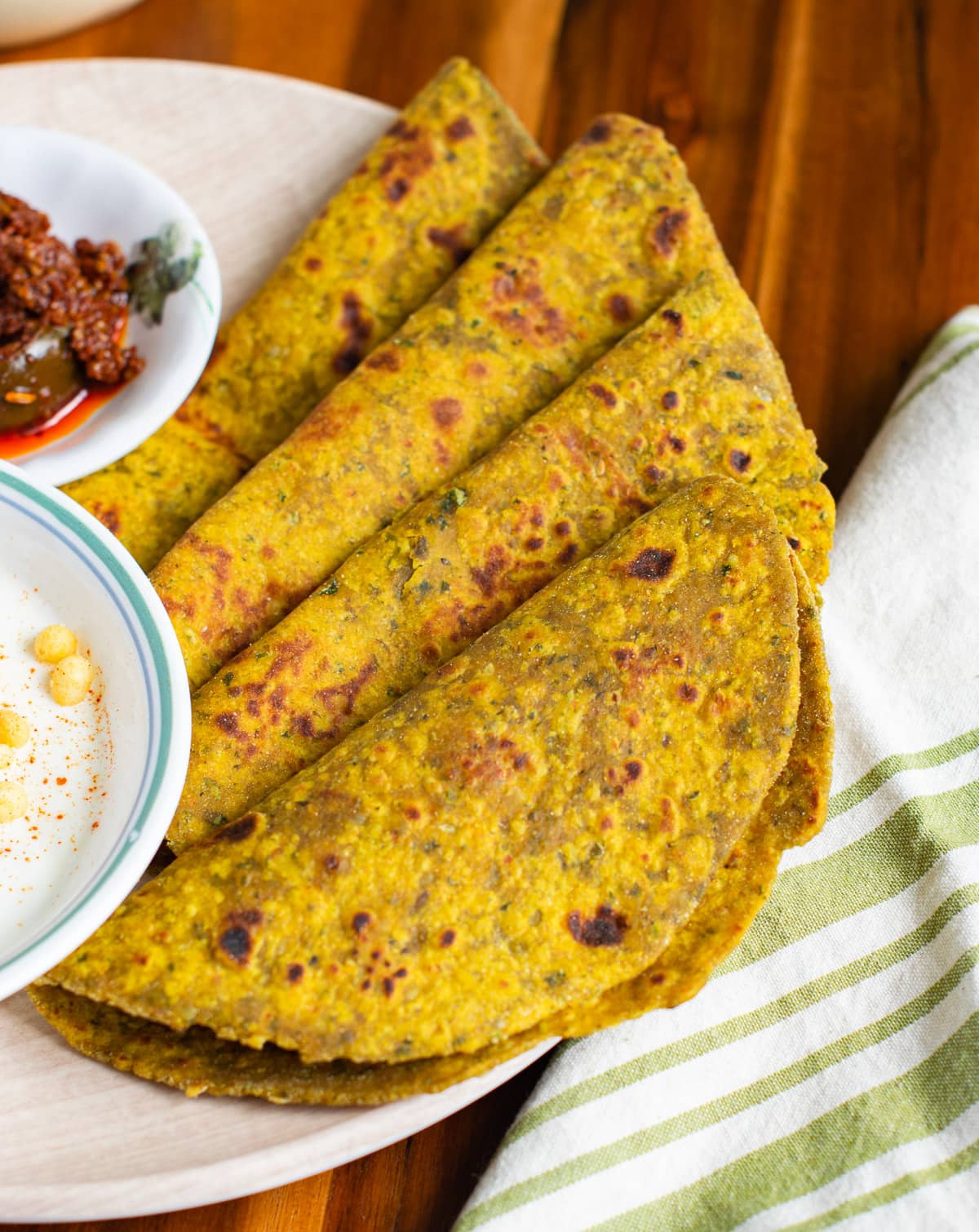
How to freeze theplas?
To freeze methi thepla, wrap each thepla individually in plastic wrap or aluminum foil and place them in a freezer-safe container or ziplock bag.
You can freeze them for up to 2-3 months.
When you are ready to use them, thaw them at room temperature or in the refrigerator and reheat them on a hot griddle or tawa.
Tips to make soft thepla.
To make soft thepla, here are some tips to follow:
- Knead the dough well: Kneading the dough well helps to activate the gluten in the wheat flour, resulting in a soft and pliable thepla. Make sure to knead the dough until it becomes smooth and elastic.
- Add some oil or yogurt : Add some oil or yogurt to the thepla dough so that the final outcome is soft.
- Use warm water: Using warm water to knead the dough can also help to make the thepla soft. The warm water helps to activate the gluten in the flour and makes the dough easier to work with.
- Rest the dough: Letting the dough rest for at least 30 minutes before rolling and cooking can help to make the thepla softer. During this time, the gluten relaxes and the dough becomes more pliable.
- Roll the dough evenly: When rolling out the thepla, make sure to roll it evenly to ensure that it cooks evenly and stays soft.
- Cook on medium heat: Cooking the thepla on medium heat helps to ensure that it cooks evenly and stays soft. If you cook it on very low heat, it may turn chewy.
- Brush with oil: Brush the thepla with a little bit of oil on both sides while cooking.
- Cover the cooked theplas : As you are making theplas place each one as done, in a hot case also known as roti case covered with a lid, or wrap them in a dish cloth. This can help to keep it soft and prevent it from drying out.
By following these tips, you should be able to make soft and delicious thepla that are perfect for eating on their own or serving with your favorite Indian curry or chutney.
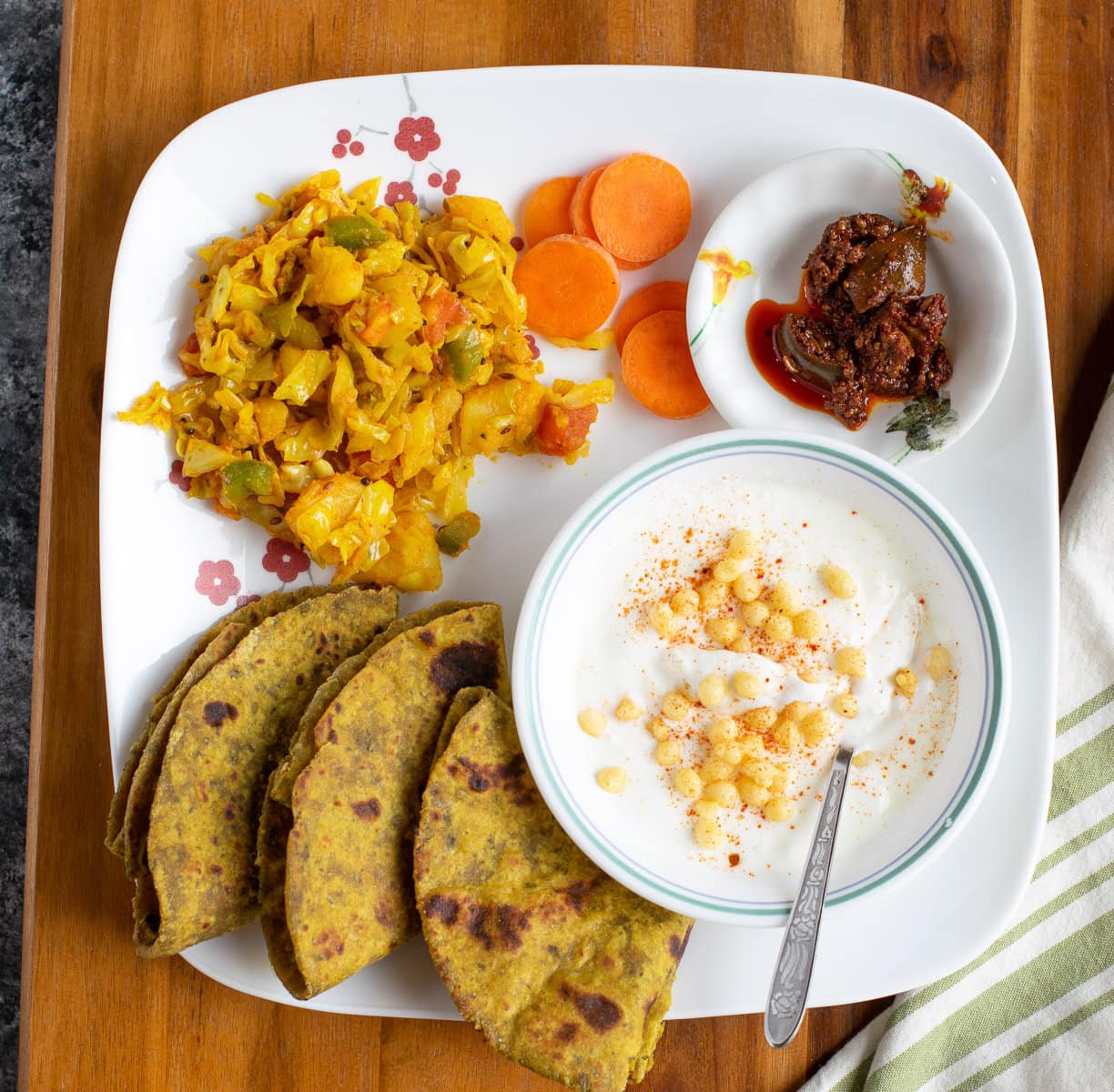
What to eat thepla with?
Thepla is a popular Indian flatbread that can be eaten on its own as a snack or served as a side dish with a variety of Indian curries, chutneys, or pickles. Here are some traditional and popular dishes that thepla can be eaten with:
- Aloo sabzi: Thepla is often served with aloo sabzi, which is a spiced potato curry.
- Raita: Raita is a yogurt-based side dish that can be served with thepla to add a cool and refreshing contrast to the spiciness of the bread.
- Pickles: Indian pickles, such as mango pickle or lime pickle, can be eaten with thepla to add a tangy and spicy flavor.
- Chutneys: Mint chutney, coriander chutney, or tamarind chutney are popular accompaniments to thepla.
- Tea: Thepla can be enjoyed as a snack with a cup of hot chai tea.
Overall, thepla can be paired with a variety of dishes and is a versatile food that can be eaten for breakfast, lunch, or dinner.
KEEP IN TOUCH – Are we friends yet? Let’s connect on Facebook| Instagram | Pinterest | Twitter. Never miss a recipe. Please subscribe to my blog. It is free! Check out easy recipe videos on my YouTube channel now! Pin this photo for future reference.
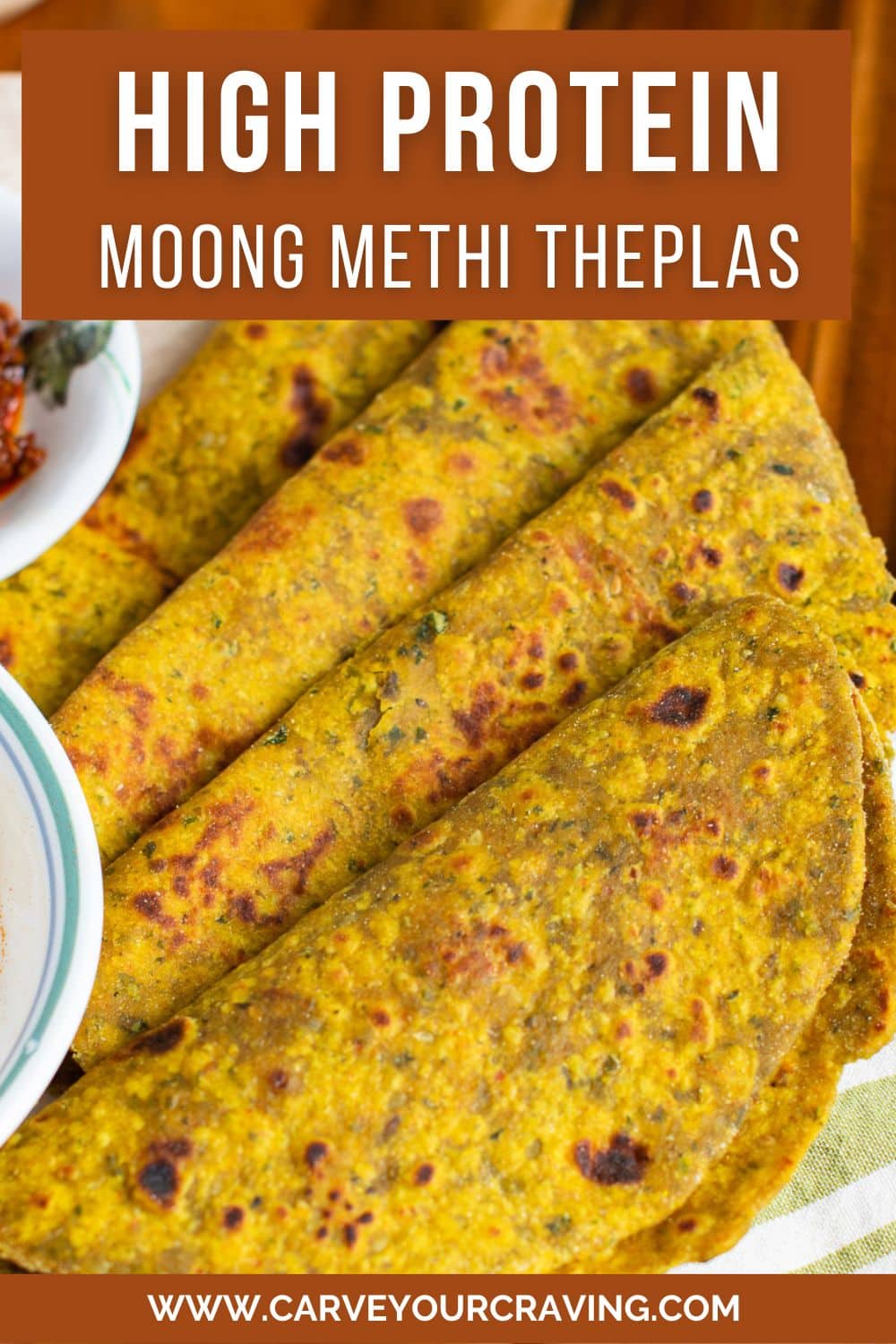
Moong Methi Thepla Recipe.
Moong Methi Thepla
Ingredients
- 1 cup boiled or leftover moong bean dal.
Flour used.
- 11/4 cup whole wheat flour
- ¼ cup chickpea/chana flour besan
- ½ cup oat flour
- ¼ cup quinoa flour
- 1.5 cup fresh or frozen fenugreek leaves methi, finely chopped
- ½ cup mint leaves pudina (optional)
- 1 tablespoon oil or yogurt
- ¼ cup water or more to knead the dough
- 2 teaspoons minced ginger
- 1 green chili or 1 teaspoon paste
Spices used.
- ¼ teaspoon turmeric powder
- 1.5 teaspoon red chili powder
- ¼ teaspoon cumin powder
- 1 teaspoon coriander powder
- 2 teaspoon sesame seeds
- 1 teaspoon ajwain
- 2 teaspoon Salt or to taste
For pan frying.
- Cooking Oil as needed.
Instructions
Food processor method
- Add the whole methi leaves, mint, ginger and green chili to the processor and pulse for few times.
- Now change the blade attachment to dough attachment and add rest of the ingredients.
- Add water as needed, not all at once but divided.
- Stop the food processor in between and scrap the sides. Make a smooth dough.
Manual method.
- Finely chop the methi and mint leaves.
- In a mixing bowl, combine all the ingredients mentioned to make the dough.
- Gradually add water and knead the dough until it becomes smooth and pliable. The dough should be soft but not sticky.
- Cover the dough and let it rest for 30 minutes.
Cooking.
- Heat a tawa or griddle on medium heat.
- After the dough has rested, divide the dough into equal-sized balls. Roll out each ball of dough into a medium thickness, round disc.
- Make sure to dust the surface and rolling pin with flour to prevent the dough from sticking.
- Place the rolled thepla on the hot tawa and cook until small bubbles start to form on the surface.
- Flip the thepla and lightly apply some oil all over. Gently press it with a flipper spatula.
- Now flip again and apply oil all over the other side. Press it all over, flip one more time.
- Cook on both side until it is golden brown.
- Repeat the process with the remaining portions of dough.
- Serve hot with yogurt, chutney, or pickle.
- Enjoy your delicious and healthy methi thepla!
Notes
- Use whole wheat flour and besan instead of multigrain flour.
- Make oat flour by grinding rolled oats in your blender, or skip if unavailable.
- Adjust spices and salt to your taste.
- Use fresh or frozen methi leaves.
- Pudina/ mint is optional but recommended.
- Moong Methi thepla can be stored at room temperature for a day.
- Or for up to a week in the refrigerator.
- It is important to store the thepla in an airtight container or a ziplock bag to prevent it from drying out and becoming stale.
- If you plan to store the thepla for an extended period of time, it is recommended to freeze them.

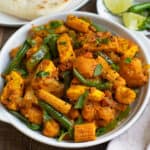
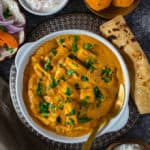

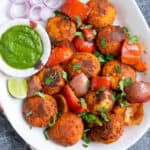
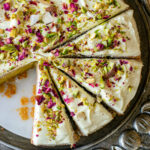

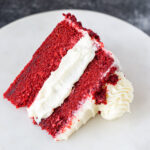
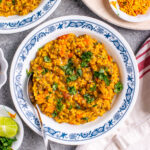
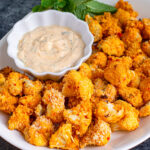


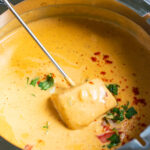
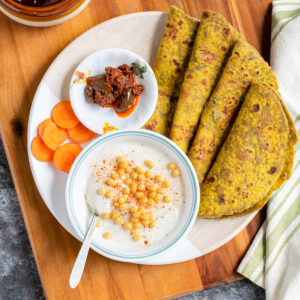

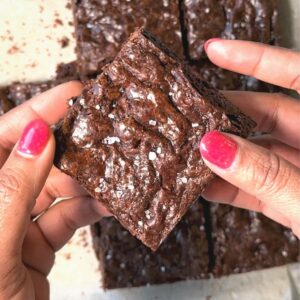
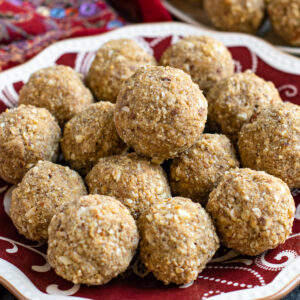
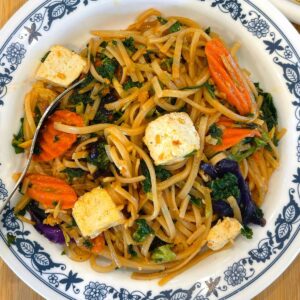
Hi Khushboo,
Hope you are well. I’m waiting for innovating new recipe. Can not see any update for couple of months. Hope all well at your end. My warm regards to you
Hello Urvi, thank you for checking on me. This year has been too busy on the personal front. I have started my clothing boutique in store and online too. I will be sharing recipes soon.